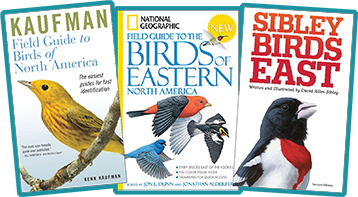Viewing wildlife can be thrilling. Spotting a bright painted bunting at a feeder, seeing an osprey catch a fish, watching shorebirds forage on the beach or glimpsing an elusive warbler are memorable moments. Spending time outdoors and observing nature enriches our lives and enhances our understanding of the world around us.
Are you interested in birding but don’t know where to start? Here are some tips. For more, the National Audubon Society offers an excellent guide.
To enhance your birding experience, learn the habitats and songs of various birds. Sound can be as important as sight in identifying species. Becoming familiar with preferred habitats, as well as migration and seasonality, will help you know when and where you are most likely to see species.
It is also important that wildlife viewing is done in a way that doesn’t harm or stress the animals, plants or habitats. Stay on marked trails. Limit the use of recordings and other audio methods to attract birds. Be cautious around nesting, feeding and roosting sites. And always respect wildlife, the environment and fellow wildlife viewers. Please review and follow the American Birding Association’s Code of Ethics.
Equipment
 Binoculars
Binoculars
Binoculars are essential. A quality pair can reduce eyestrain and increase your ability to observe and identify birds. How to choose binoculars.
 Spotting Scopes
Spotting Scopes
The greater magnification provided by a spotting scope takes viewing opportunities to the next level. Usually mounted on a tripod, scopes are useful for spotting and identifying distant shorebirds, birding in open country or viewing a far-off nest. Spotting scopes guide.
Field Guides
Field guides, whether books or apps, are the primary source of information for bird identification. Choosing the right guide and becoming familiar with it is key to improving your birding experience. Select one based on the region you will be birding in and learn the species in that area. Guides can be photo- or illustration-based.
Photo-based
Examples include Kaufman Field Guide to Birds of North America and Audubon Guide to Bird Identification.
Illustration-based
Peterson Field Guide to Birds of Eastern and Central North America, National Geographic Field Guide to the Birds of Eastern North America and The Sibley Field Guide to Birds of Eastern North America.
Apps
 Go Outdoors Georgia App (Georgia DNR)
Go Outdoors Georgia App (Georgia DNR)
This free on-the-go guide will help you explore trail sites across the state.
 Merlin Bird ID (Cornell Lab of Ornithology)
Merlin Bird ID (Cornell Lab of Ornithology)
Free, instant bird ID help for 5,500+ birds for North and South America, Europe, Asia, and Australia.
 National Audubon Society
National Audubon Society
The Audubon Bird Guide is a free and complete field guide to over 800 species of North American birds, right in your pocket.
 Sibley Birds
Sibley Birds
The Sibley Guide to Birds—the most popular, most comprehensive, and fastest-selling printed field guide to North American birds—is available in digital form as an app for several mobile phone platforms.
Other Books
Birding Georgia (Giff Beaton), Handbook of Bird Biology (Cornell Lab of Ornithology), Birds of Georgia by Parrish, Beaton, and Kennedy and Bird Watching Answer Book by Laura Erickson.
Checklists
You can record bird species you have seen via a checklist and eBird. The Georgia Ornithological Society offers a checklist of all Georgia birds. Rare bird sightings can be reported on eBird (which also offers Georgia rare bird alerts) or the Georgia Birders Online listserv.
Events

